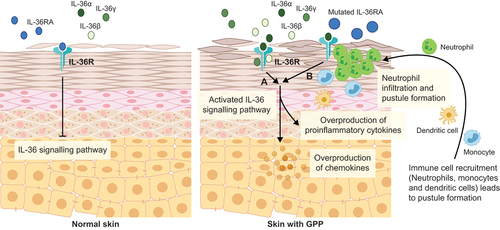Figures & data
Table 1. Genetic risk factors in Chinese patients with GPP.
Figure 1. IL-36 signaling pathway in normal skin and in skin with GPP.

Table 2. Summary of therapies recommended by global guidelines for management and treatment for GPP and clinical experience in China for GPP, based on disease conditiona.
Table 3. Summary of therapies for adult patients with GPP in China, based on therapy categorya.
